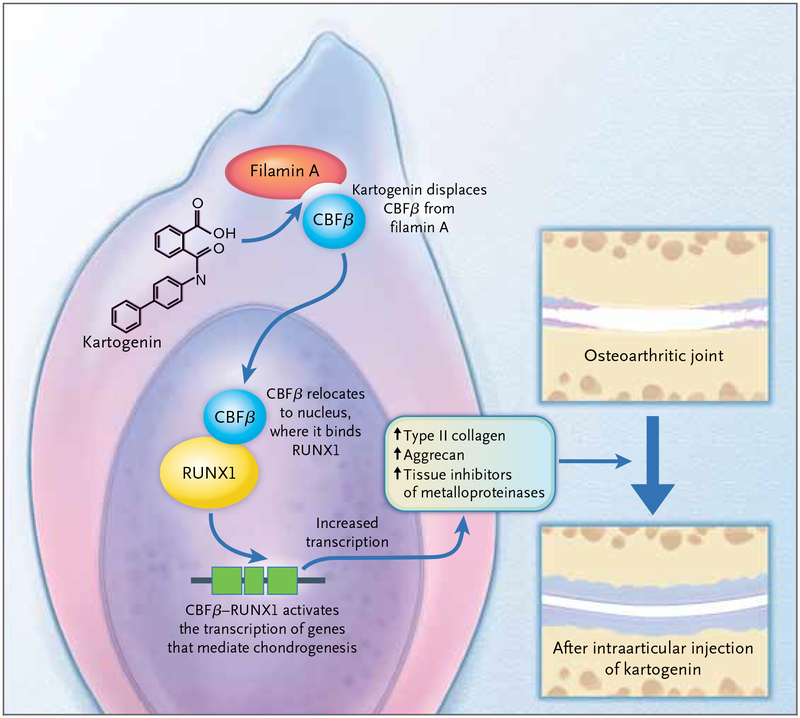Figure 1. Cartilage Regeneration.
Johnson and colleagues1 recently described data from mouse models supporting the theory that the intraarticular injection of a small heterocyclic molecule, kartogenin, differentiates endogenous mesenchymal stem cells into cartilage-producing chondrocytes. According to in vitro experiments with human mesenchymal stem cells, kartogenin binds to the carboxyl end of filamin A, displacing CBFβ from its cytoplasmic binding site. CBFβ is thus freed Draft 6 to enter the nucleus, where it binds to the DNA-binding transcription factor RUNX1. The CBFβ–RUNX1 complex activates the transcription of proteins involved in cartilage differentiation, increases the synthesis of components 3 6/11/12 of the cartilage matrix (such as collagen type II, aggrecan, and tissue inhibitors of metalloproteinases), and protects cartilage against stress factors.

